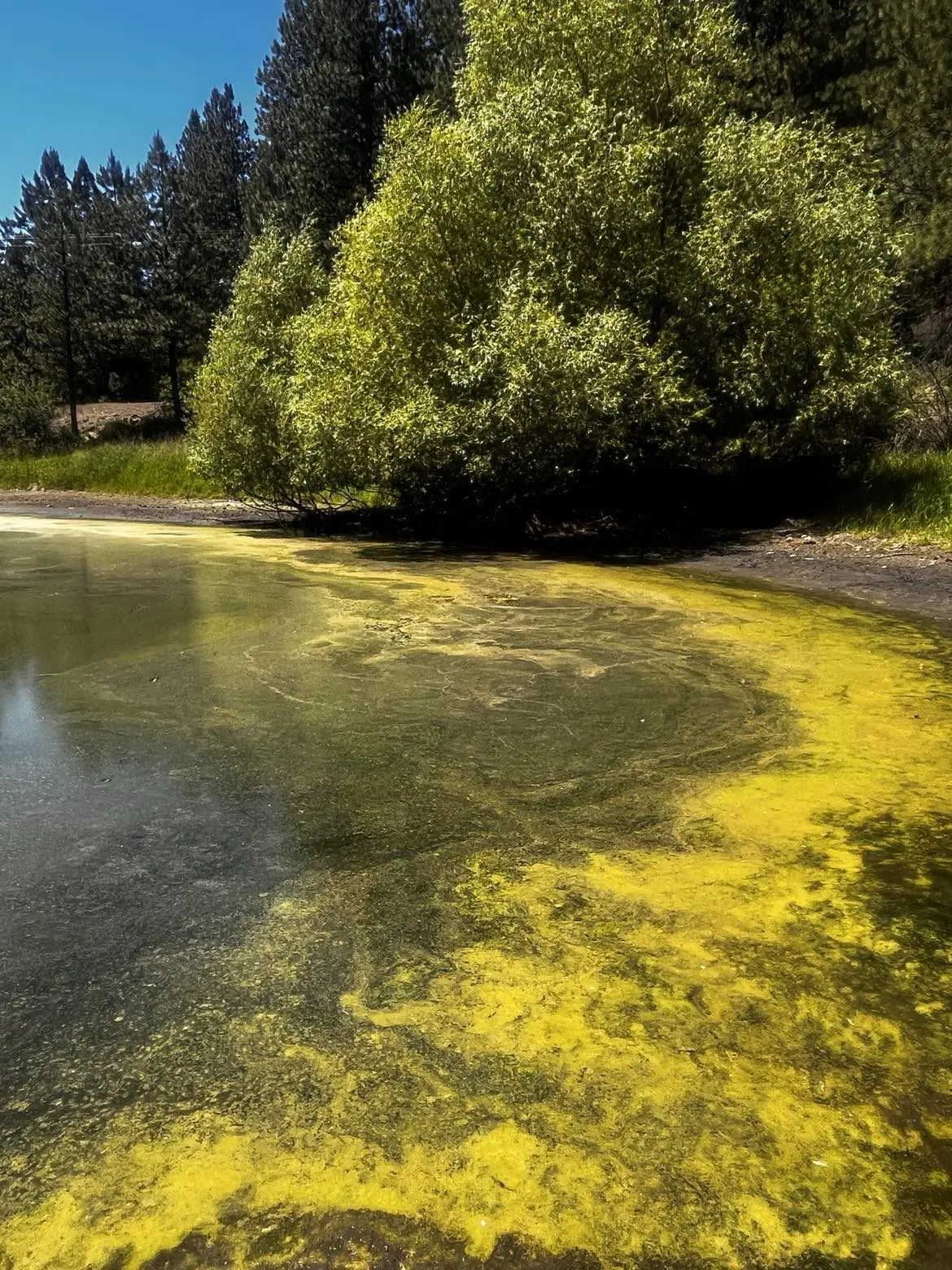
The blue-green algae blooms that are popping up in lakes all over the northwest can be a quick killer of pets.
WSU’s Animal Disease Diagnostic Labratory’s Dr. Chelse Sykes says “Just grabbing a ball or a stick from the water or even licking algae off their fur can be fatal.”
Blue-green algae, also known as cyanobacteria, can kill pets in as little as 15-20 minutes. Animals can be exposed to blue-green algae and its toxins by contacting any affected water body, including ponds, lakes, streams, rivers, or even residential decorative ponds and neglected swimming pools.
Cyanobacteria are microscopic organisms that live in fresh bodies of water that usually multiply and bloom when water is warm, stagnant, and rich in nutrients like phosphorus and nitrogen from sources such as fertilizer runoff.
Blooms typically occur in late spring through early fall and can resemble thick, slimy green paint or pea soup on and in surface waters and eddies of running waters. Blooms, however, can have many colors. Dr. Sykes went on to say “…you can’t tell if a bloom is toxic just by looking at it. That’s why we always say ‘when in doubt, stay out.’”
Dead fish, waterfowl, or other animals around a water source may indicate the presence of blue-green algae, but a release from WSU says it is impossible to tell whether a given body of water has a toxic bloom without sophisticated testing. During warmer months, it is best to assume all still or slow-moving surface waters are potentially contaminated.
Symptoms of algae poisoning in pets can develop quickly and include vomiting, diarrhea, weakness, disorientation, pale gums, skin rashes, seizures, difficulty breathing, or collapse.
If a pet is showing signs of exposure, immediate veterinary care is critical. Pet owners can call their veterinarian or the WSU Veterinary Teaching Hospital emergency line at 509-335-0711.
“The best protection is prevention,” Sykes said. “Keep your pets leashed near open water and always be cautious. It’s not worth the risk.”

